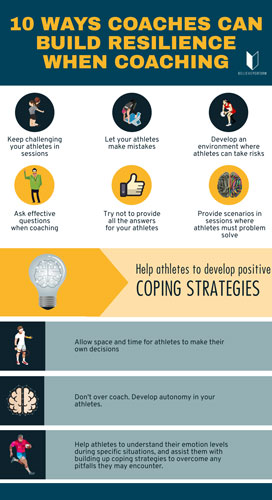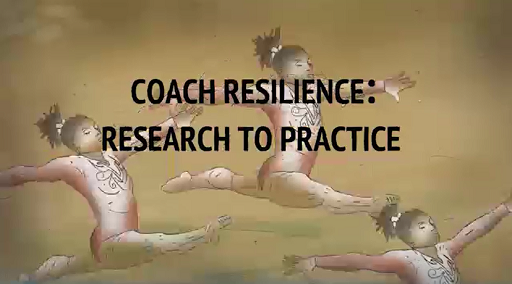3 Approaches to building athlete and coach resilience
Box _unit3.4.1
Mental resilience is not something that all participants and coaches automatically have and this should be developed with the same consideration that physical resilience is built.
This quote is taken from a UK government independent report by Baroness Grey-Thompson looking into the issues surrounding the Duty of Care that sports have towards their participants. The review examined aspects of elite sport ranging from personal safety and injury, to mental health issues, and the support provided to those involved. What is interesting here is the equal value given to both physical and mental resilience and the reference to both sport participants and coaches.
As a result of the growing awareness of the importance of building resilience in sport, there are increasing numbers of resources being published to support the development of resilience in athletes, such as the Resilience Building Toolkit from UK Coaching. A second example is presented in Figure 2, with an infographic developed for a coach audience to offer tips for building resilience.

While such resources are a positive step, researchers call for other considerations to be made when planning interventions, for example, the timing of an intervention to develop resilience is critical and both robust and rebound resilience should be considered (Fletcher and Sarkar, 2016). Furthermore, an intervention should be grounded in theoretical and conceptual advances (Fletcher and Sarkar, 2012).
In Activity 2, you were introduced to mental fortitude training (Fletcher and Sarkar, 2016) to support the development of resilience. Howells (2022) discusses two further interventions: planned disruptions and rational-emotive behaviour therapy (REBT), which you look at next.
Activity _unit3.4.1 Activity 3 Investigating resilience interventions
First read the reading at the following link, which is a section of a chapter called ‘Developing resilience on the athlete’s journey’ (Howells, 2022).
Reading: Planned disruptions and REBT
Then complete the ‘Key features’ column in the table below to summarise each intervention appropriately.
| Aim | Key features | |
| Planned disruptions | Involves the exposure of athletes to specific training activities that increase/change demands placed on them. | |
| REBT | Works on the assumption that many of the problems faced by an athlete can be caused by irrational thinking. |
Discussion
| Aim | Key features | |
Planned disruptions |
Involves the exposure of athletes to specific training activities that increase/change demands placed on them. |
Research has identified a number of types including competition simulation. Involves encouraging the athletes to reflect on their responses to build self-awareness. |
REBT |
Works on the assumption that many of the problems faced by an athlete can be caused by irrational thinking. |
Uses the ABC(DE) framework. Does not dispute that stressors/adversity exists but works to change the athlete’s perception by replacing their beliefs. |
Watch the video ‘Coach resilience (Part 2)’, which revisits the research from Sarkar and Hilton (2020). In the video, the protective factors (identified by the coaches in the research) are discussed along with practical implications from the research findings in terms of building coach resilience.

Transcript: Coach resilience (Part 2)
Now, having watched the video, answer the following questions:
- How might the research findings help a coach, to support them to build their own resilience?
- How could the practical implications of the research inform the organisation that the coach works for to support the development of their own resilience and other coaches’ resilience?
Discussion
- You might have noted that Dr Sarkar emphasises the importance of a coach understanding their own protective factors. The coach could reflect on the six protective factors discussed and consider their own strengths in these areas and identify where they might need to develop further. For example, they might perceive that they has a sound coach support network and has durable motivation but might acknowledge that they could improve their work-life balance.
- The research highlighted that an organisation could support coaches in developing resilience. It identified education and support regarding the stressors that might be experienced and the protective factors that could buffer against these factors. For example, organisations such as English Athletics could provide coach education on resilience that a coach could access to help them become more aware of the possible stressors in their role and how they could develop skills to protect themselves from the potential negative effects of these stressors. There could be workshops and resources to help them to develop leadership and management skills, as well as mechanisms to support their wellbeing.
It is clear that education is a core element in the development of resilience to support impactful interventions, and here you have considered how a coach might support the facilitation of an individual athlete, alongside the development of their own skillset.
In Session 1, you examined the difference between individual and team resilience. It is important, then, for the coach to consider each separately when looking to develop resilience. You will investigate developing team resilience in the next section.
